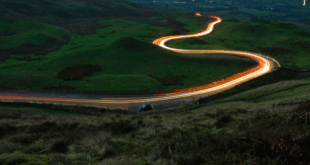For large parts of the UK, heavy snowfall is rather rare. When it does arrive, despite weather warnings we always seem unprepared. Whilst we always like to criticise our local authorities for not doing enough, we wouldn’t want them buying rarely used equipment either.
Driving in the Snow
Even for someone with experience of driving in snow, extreme care is needed. You need to be aware of what may happen to other cars on the road not just yours, the snow can also cover hazards. The critical first bit of advice is to allow plenty of time, that usual five minute journey could easily take 15 minutes or more.
Here are some key tips for safe driving in the snow;
- Switch lights on
- Be gentle, gentle acceleration and gentle braking
- Pull away is second and change up as soon as possible. Switch off traction control to get moving.
- Allow about ten times the normal stopping distance
- Aim to keep moving especially when approaching a hill
- Use low gears when descending, try to avoid braking
- Slow down before bends
- Avoid getting too confident, an ice patch may be ahead
- Concentrate at all times
Accessories
In many European countries where bad Winter weather is the norm, snow tyres are routinely fitted. The rubber is softer at cold temperatures giving better grip. It’s surprising how much difference they make. For rear wheel drive cars such as most Mercedes Benz, BMW and Jaguars they are worth considering if you need to do high mileages.
In snowy alpine areas, carrying snow chains is often compulsory, so if you are off skiing by car, check if you need them. Even here they’re worth having especially if your car is rear wheel drive. The cost about £45. You use them to get out of trouble, once on tarmac they must be removed, they are amazingly effective. They can be fiddly and a bit messy to fit, so where gloves and practice on a warm day.
Snow socks perform a similar role, they are easier to fit and will suffice in most British Winters, at about £65 they are more expensive than chains.
Be prepared
If you must make a long journey in the snow, take a hot flask with you, drinking water and cereal bars or similar. Make sure you have warm clothing, gloves and hats. If room allows also take a sleeping bag, particularly for continental jaunts.
Also have a spade in your boot, some old carpets and wellington boots.
 Travellers Club The Travellers Club, a free to join on-line club for everyone who loves to travel.
Travellers Club The Travellers Club, a free to join on-line club for everyone who loves to travel.









